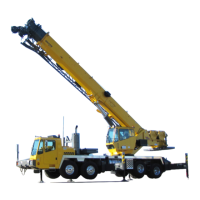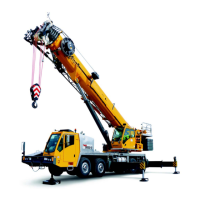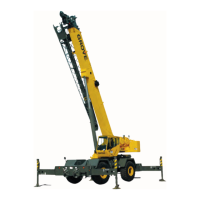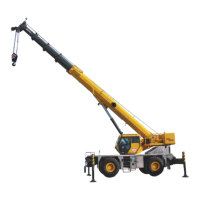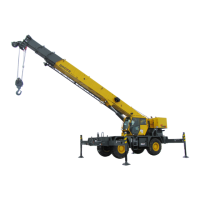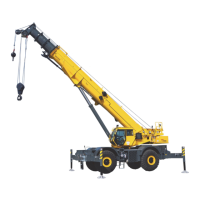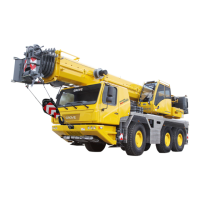8-31
TMS800E SERVICE MANUAL UNDERCARRIAGE
Published 01-29-2014, Control # 496-00
4. Use a brass drift to remove the bottom anchor pin.
Remove the bottom shoe. If necessary, remove the
rollers (Figure 8-33).
Clean and Inspect Parts
NOTE: Refer to Inspection under Front Brakes in this
section.
Rear Brake Assembly
Each time the brakes are relined, the following parts should
also be replaced.
• Springs
• Rollers
• Anchor Pins
• Clevis Pins
• Camshaft Seals
1. Lubricate the camshaft roller pin and anchor pin with
grease.
2. Install the anchor pin bushings. If necessary, align the
holes in the bushings with the holes in the spider.
3. Install a new cam roller and cam roller retainers.
Rear Brake Shoe Installation
1. Install the lower brake shoe in position on the spider.
2. Use a hammer and brass drift to install the anchor pin. If
necessary, align the groove on the anchor pin with the
holes in the spider and bushing.
3. Install the anchor pin washers, felts, seals, retainers and
snap rings, if required. Install lock pins or lock screws, if
required. Tighten the screws 13.6 to 20.3 Nm (10 to 15
lb-ft).
4. Install a new shoe return spring onto the brake shoe
(Figure 8-34). Place the upper brake shoe into position
over the spider. Repeat steps 1 and 2.
5. Install the slack adjuster and adjust brakes. Refer to
Slack Adjuster in this section.
AUTOMATIC SLACK ADJUSTER (FRONT)
Description
The automatic slack adjuster compensates for normal wear
in the brake shoe linings by maintaining a nominal clearance
between the lining and drum. They are preset at the
manufacturer’s facility.
When the brake is applied the slack adjuster’s rotation
moves the shoes and linings into contact with the brake
drum. This movement also lifts the actuation rod through a
pre-set, free travel dimension that is normal lining to drum
clearance. Continuing the brake application rotates a one-
way clutch in its over riding mode, and at the same time
causes the large coil spring to deflect at a specific force. This
spring deflection allows the worm to move axially. The clutch
movement is restricted by a machine step. This movement
fully disengages the drive clutch from the worm and prevents
unwanted brake adjustment from occurring.
When the brake is released, the large coil spring resumes its
original load and position, which allows the drive clutch to re-
engage.Simultaneous to drive clutch re-engagement, if any
lining wear has occurred, the actuation rod rotates the one
way adjuster clutch an amount proportional to lining wear.
Reference Only
